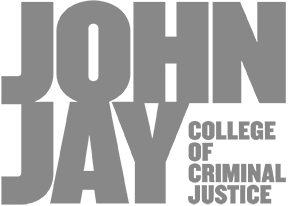North Korean Agitprop: CUNY Exhibition Offers Glimpse into Secretive Society
by Mike Newton
The Indypendent / DECEMBER 16, 2014
Walking down Broadway, I saw a bus sporting a giant ad for The Interview, an upcoming comedy film about two Americans’ misadventures in North Korea. Seth Rogen and James Franco are shown gazing, stalwart, into the unknown, flanked by red-tipped missiles and an angry Korean guy with a machine gun. The ad is meant as a tongue-in-cheek pastiche of overwrought propaganda art; it reads as a joke, because it’s so clearly a fish-out-of-water scene. The world in which James Franco and Seth Rogen are movie stars is not compatible with the stone-faced, marching-parade dogma of dictatorial Communism. Inside “Assenting Voices,” currently on view in the Shiva Gallery at John Jay College, I saw more of the same: more bright red letters, more guys with machine guns — only here, it was no joke.
“Assenting Voices” includes paintings and illustrated propaganda posters from North Korea and, yes, the posters look pretty much exactly how you’d expect. In 1948, while under Soviet occupation, North Korea became the Democratic People’s Republic of Korea (DPRK), adopting a sort of homegrown Stalinism under its new leader, Kim Il-sung. And that’s where it stayed: now widely regarded as the last bastion of Stalinism, the DPRK is currently in its 67th year of Kim family rule.
Just as Western art and design have undergone profound changes since 1945 — reflecting a rapidly and tumultuously shifting culture — the static formulism of these posters reveals a society deeply resistant to change. Indeed, even the Soviet Union tried to update its propaganda for the times: Soviet posters from the 1970s and ’80s use minimalistic composition, expressive line work, silly cartoons. There’s none of that here. Instead, North Korea has stayed true to “socialist realism,” the brightly lit, protagonist-driven, polemically motivated style that had been Soviet state policy under Stalin. Viewers may be surprised at how similar a DPRK poster from, say, the early 1950s is to one produced in the late 1980s (the exhibition doesn’t include any posters made after that).
Also surprising is how little there is of Kim Il-sung himself. Though North Korea is famous as a place that profoundly mythologizes — even apotheosizes — its leaders, the imagery here is mainly focused on common, hard-working citizens. Many of the posters feature individual, ordinary Koreans, heroically foregrounded in the center of the frame, displayed against sweeping, technologically imposing backdrops. One image shows a female factory worker smiling proudly as she stencils “MADE IN D.P.R.K.” onto a row of wooden crates; behind her are massive hydraulic lifts and solid shipping vessels already at sea. Another shows a young soldier, stoically clutching his assault rifle before a towering factory of giant, belching pipes. Another has a schoolboy diligently studying science, dreaming of airplanes, monorails and beeping radio towers. Almost every image shows at least something — a skyscraper, a tractor, a missile — that couldn’t exist without advanced industrial technology.
But this exhibition has more than just propaganda posters; there are recent oil paintings, too, and that’s where it gets really tricky. Each painting features lushly rendered human subjects — almost all beautiful young women — against slightly out-of-focus backgrounds. These works also seem to valorize the daily efforts of dedicated citizens, but their stark compositions and muted colors betray a sort of foreboding melancholy, a sadness that’s nowhere to be found in the zippy, propulsive posters. One painting — Performance II (2011) — shows a woman singing into a microphone, while behind her looms the massive gray-brick Monument to the Foundation of the Worker’s Party. The scene is dark and lonely: the woman seems to be plaintively singing into the middle of the night, with no one around.
Another work — Ballet (2011) — shows a dancer hunched on a stool in the corner, with most of the canvas given over to a sun-dappled white wall. The piece becomes almost an abstract painting, reminiscent of J.M.W. Turner’s apocalyptic late works. Due to the complexities of showing North Korean art outside of North Korea, the paintings are presented here without much provenance: we don’t know exactly who made them, or why. But, assuming that these are state-sanctioned works, they seem to be using the concept of romantic beauty — as embodied by women, autumnal landscapes and musical performance — similarly to how the posters utilize ideas of labor and technology: as a continual reaffirmation of the state’s (supposed) vast resources and power.
Here in New York City, all this stuff reads as occasionally beautiful, but generally silly, self-parodying kitsch. We like to laugh at the bluntness of this straightforward propaganda. But we have propaganda here, too; it’s perhaps more subtle, but it’s there. With image-memes entreating us to honor “the troops” regardless of the war and sunny political campaign commercials in which every candidate is a true man or woman of the people, we’re surrounded by media that tugs at our emotions in honor of the state. All media contains messages, after all, and in the right hands, anything — up to and including monorails, microphones and ballet dancers — can become propaganda. You can choose whether or not to laugh.
